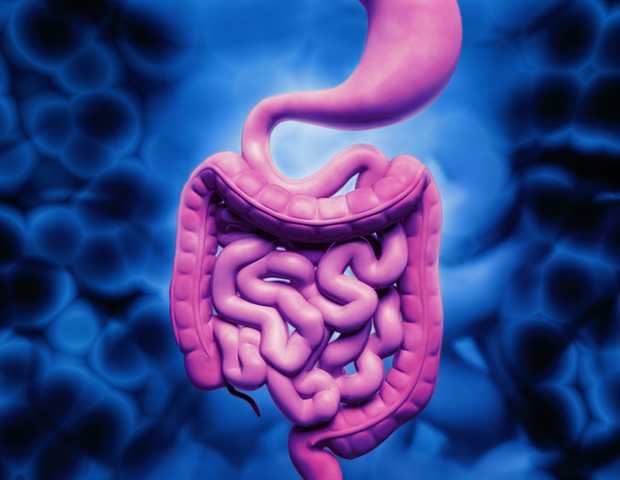
A multi-institutional group of researchers led by the Hubrecht Institute and Roche’s Institute of Human Biology has developed methods to establish regulators of intestinal hormone secretion. In response to incoming meals, these hormones are secreted by uncommon hormone producing cells within the intestine and play key roles in managing digestion and urge for food. The staff has developed new instruments to establish potential ‘nutrient sensors’ on these hormone producing cells and examine their operate. This might lead to new methods to intrude with the discharge of those hormones and supply avenues for the therapy of quite a lot of metabolic or intestine motility problems. The work will likely be offered in an article in Science, on October 18th.
The gut acts as a significant barrier. It protects the physique from dangerous micro organism and extremely dynamic pH ranges, whereas permitting vitamins and nutritional vitamins to enter the bloodstream. The intestine can be dwelling to endocrine cells, which secrete many hormones that regulate bodily capabilities. These enteroendocrine cells (EECs, endocrine cells of the intestine) are very uncommon cells that launch hormones in response to varied triggers, corresponding to stretching of the abdomen, vitality ranges and vitamins from meals. These hormones in flip regulate key points of physiology in response to the incoming meals, corresponding to digestion and urge for food. Thus, EECs are the physique’s first responders to incoming meals, and instruct and put together the remainder of the physique for what’s coming.
Drugs that mimic intestine hormones, most famously GLP-1, are very promising for the therapy of a number of metabolic illnesses. Instantly manipulating EECs to regulate hormone secretion might open up new therapeutic choices. Nevertheless, it has been difficult to know how intestine hormone launch will be influenced successfully. Researchers have had bother figuring out the sensors on EECs, as a result of EECs themselves symbolize lower than 1% of cells within the intestinal epithelium, and as well as the sensors on these EECs are expressed in low quantities. Present research primarily depend on mouse fashions, regardless that the alerts to which mouse EECs reply are seemingly completely different in comparison with these to which human EECs reply. Subsequently, new fashions and approaches have been required to review these alerts.
Enteroendocrine cells in organoids
The Hubrecht staff has beforehand developed strategies to derive giant portions of EECs in human organoids. Organoids comprise the identical cell kinds of the organ they’re derived from, and are subsequently helpful to discover the event and performance of cells corresponding to EECs. Utilizing a particular protein Neurogenin-3, the researchers might generate excessive numbers of EECs.
Prior to now, the Hubrecht researchers developed a solution to enhance the variety of EECs in organoids of the gut. Contemplating that EECs have completely different sensors and hormone profiles in several areas of the intestine, finding out these uncommon cells requires that the researchers make EEC enriched organoids of all these completely different areas.Within the present examine, the staff managed to counterpoint EECs in organoids of different elements of the digestive system, together with the abdomen. Like the true abdomen, these abdomen organoids reply to recognized inducers of hormone launch and secrete giant quantities of the hormone Ghrelin, which can be referred to as the ‘starvation hormone’ as a result of it performs a key function in signaling starvation to the mind. This confirms that these organoids can be utilized to review hormone secretion in EECs.
EEC sensors
Since EECs are uncommon, researchers have struggled to profile many EECs. Within the present examine, the staff recognized a so-called floor marker, referred to as CD200, on human EECs. The researchers used this floor marker to isolate a lot of human EECs from organoids and examine their sensors. This revealed quite a few receptor proteins that had not but been recognized in EECs. The staff then stimulated the organoids with molecules that may activate these receptors and recognized a number of new sensory receptors that management hormone launch. When these receptors have been inactivated utilizing CRISPR-based gene enhancing, hormone secretion was usually blocked.
With these information, the researchers can now predict how human EECs reply when sure sensory receptors are activated. Their findings thus pave the best way for extra research to discover the results of those receptor activations. The EEC enriched organoids will permit the staff to carry out bigger, unbiased research to establish new regulators of hormone secretion. These research could finally result in therapies for metabolic illnesses and intestine motility problems.
Supply:
Journal reference:
Beumer, J., et al. (2024). Description and practical validation of human enteroendocrine cell sensors. Science. doi.org/10.1126/science.adl1460.